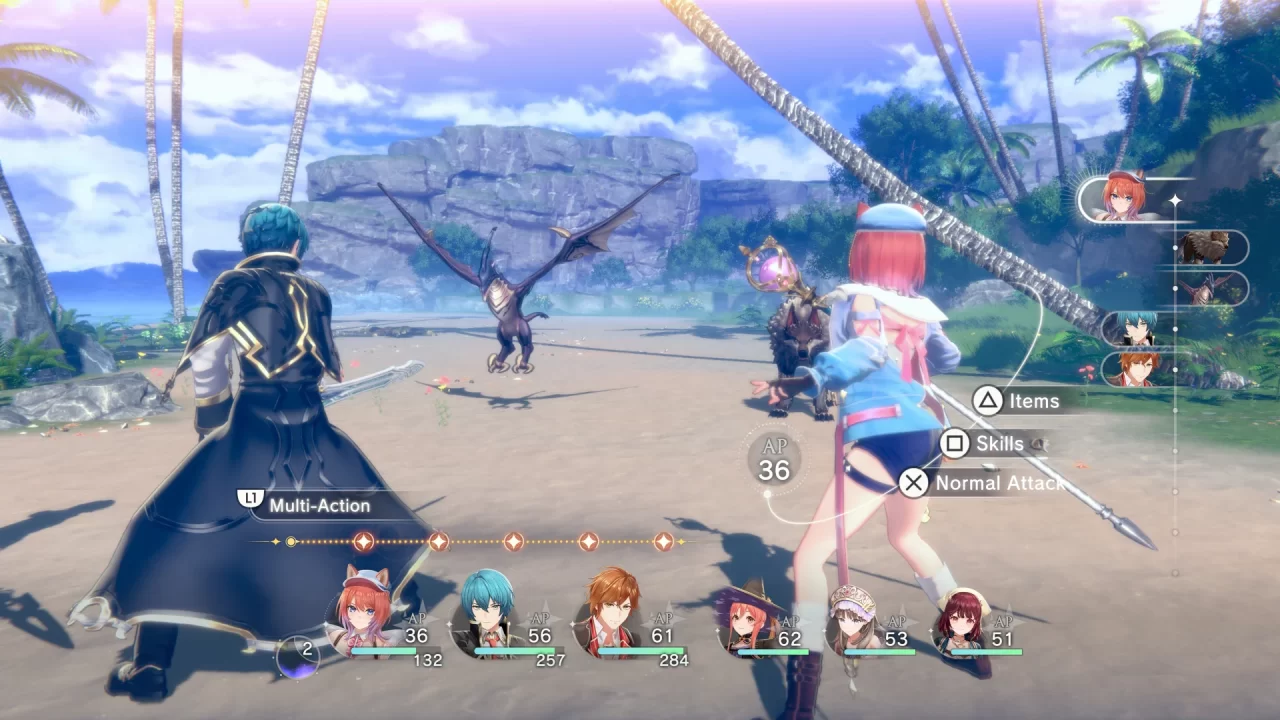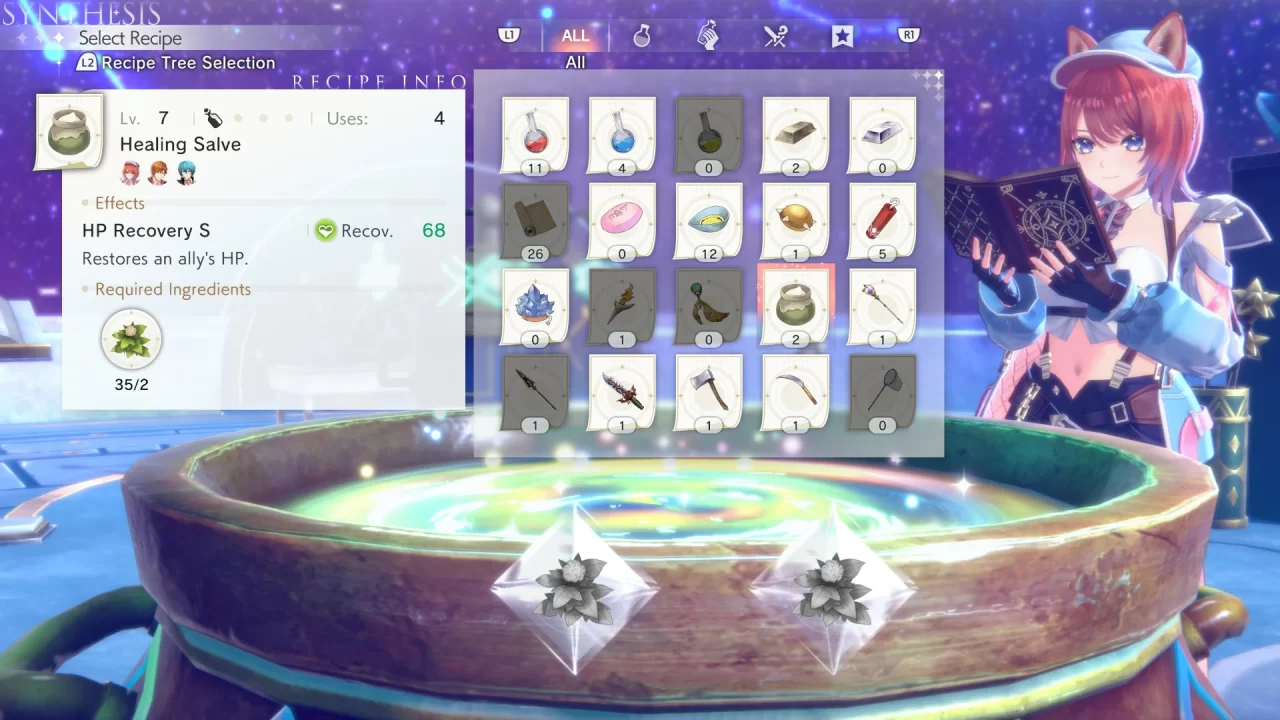It was a dark day for the Atelier fandom when Gust announced that Project A25—the 25th Atelier entry—was a gacha game. While the franchise is no stranger to spinoffs, including Atelier Online: Alchemist of Bressisle for mobile, Atelier Resleriana: Forgotten Alchemy & the Polar Night Liberator broke new ground for the series, for better or worse. Not only was the game a free-to-play gacha, but it was also limited to mobile devices and PCs, which contradicted Gust and Koei Tecmo’s efforts to expand the series to a broader audience across multiple platforms. With a focus on crossover characters from previous titles buried in FOMO-infused limited-time banners, an oversaturated gacha market, and stripped-down systems and mechanics, Atelier Resleriana: Forgotten Alchemy and the Polar Night Liberator had an uphill battle from the start, and I say that as one of the few people who enjoyed it.
Slightly over a year later, the game went end of service in the West, leaving behind the hollow corpse of a game that still shambles on in Japan, yet leaves a coffin-shaped hole in the franchise for Western fans. It’s remaining local, even though the Atelier franchise is beloved by fans worldwide these days. Could the game be saved in any way, or is it better to move on to the next thing? Koei Tecmo’s answer is a mixture of both ideas, leading to one of the better salvage jobs in the industry. While not as impressive or on the scale of Square Enix’s Final Fantasy XIV: A Realm Reborn rebirth, Atelier Resleriana: The Red Alchemist & the White Guardian feels like a course correction, an apology, and a thank you to fans of the series.
Atelier Resleriana: The Red Alchemist & the White Guardian is a return to form in many ways. While the most recent Atelier series, Atelier Yumia: The Alchemist of Memories & the Envisioned Land, featured a deep and complex synthesis system with kinetic and chaotic battles, Atelier Resleriana: The Red Alchemist & the White Guardian takes a more simplified approach to alchemy and combat. The world is much smaller in scope, split into pockets and zones that are reminiscent of the PS3 and PS4 era Atelier games. Many of the ideas in Atelier Yumia were a bold step forward into the future, but Atelier Resleriana: The Red Alchemist & the White Guardian is a look back at the past, spanning the franchise in both roster and mechanics.

Unlike the previous Atelier Resleriana title, The Red Alchemist & the White Guardian plays like a proper and fully fledged Atelier game. Players can spend their days exploring fields and zones, gathering materials, fighting enemies, crafting items, and managing their shop. All of these tasks contribute to the game’s primary goal: to restore the town of Hallfein. The Red Alchemist & the White Guardian focuses on town restoration, but there is no town building per se. Unlike the last crossover title, Nelke & the Legendary Alchemists: Ateliers of the New World, players aren’t selecting building placements or what said buildings have available for purchase. Instead, by investing money, completing tasks, recruiting fairies, crafting and selling new items, and so on, the town advances in levels as different districts undergo improvements. As the districts grow, so does Hallfein itself, and the range of shops and merchants available expands. Admittedly, I was reminded of Final Fantasy XIV’s Doman and Ishgardian Restoration projects more than anything.
The Red Alchemist & the White Guardian’s synthesis system is also quite basic at first glance. However, as the story progresses and Rias learns new recipes, a bevy of branching paths open up that often change the original recipe completely. The color-matching gift system is easy to understand, and the onboarding process gently introduces players to the alchemy system. Recipes have clearly defined branching paths, which allows players to plan ahead the moment they unlock new recipes. While the system isn’t as deep or complex as the Mysterious series’ color-matching or Atelier Yumia’s radius-based resonance system, The Red Alchemist & the White Guardian’s synthesis system feels right at home with the PS3-era Ateliers. Thankfully, the incredible number of quality of life changes over the years is reflected in the new system, ensuring players will find it easy to learn and easy to master.

The gacha featured stunning visuals, ranging from beautiful vistas to gorgeous character designs. Graphically, the game appeared both high-budget and high-quality. While the character models in Atelier Resleriana: The Red Alchemist & the White Guardian match the previous game, the cutscene direction is a step up for the series due to the dynamic angles and scene layout. Animations look fluid and natural, emotions are easily discernible, and conversations flow naturally with a focus on facial expressions. The locals, however, appear much flatter because it allows free roaming about the zones, as opposed to the gacha’s on-rails exploration. This flatness is most present in the Dimensional Paths—strange dungeons that look and feel randomly generated. Dimensional Paths are fantastic spots for gathering materials, hunting down augmented foes, and scouting out faeries to help the town. They generally consist of small, flat rooms, yet they’re home to some of the more interesting and strange locales in the game.
On the narrative front, The Red Alchemist & the White Guardian is awkward, to say the least. Although it’s a sequel to a defunct game, it also serves as a standalone story, focusing on the fledgling alchemist Rias and her newfound companion, Slade. Naturally, the titular Resna and Valeria make their appearances, and the story references events in the prior game, but the two never join the party. As one of the few dual-protagonist games in the series, players can start with either Slade or Rias, yet their paths quickly converge as their goals align. Rias learns that her knack for alchemy can help her uncover the truth behind a tragedy that occurred many years ago. At the same time, Slade seeks to unravel the mystery surrounding the gauntlet his family left behind. Throughout the game, the two aim to rebuild the devastated town of Hallfein—a town generally abandoned by the nation’s capital following the aforementioned tragedy. Eventually, the story finds its footing as a solid and emotional tale about cooperation and helping those in need.

Until the release of Atelier Ryza: Ever Darkness & the Secret Hideout in 2019, mainline Atelier games featured exclusively turn-based battles. With Ryza, the developers began experimenting with real-time hybrid combat systems, focusing on timelines similar to Final Fantasy’s Active Time Battle systems. Atelier Resleriana: The Red Alchemist & the White Guardian takes a look back at the series, incorporating elements from former turn-based battle systems. The multi-action system, in which characters can tag in with combo attacks, feels like a mixture of Mana Khemia: Alchemists of Al-Revis and Atelier Sophie 2: The Alchemist of the Mysterious Dream. Additionally, Atelier Lulua: The Scion of Arland’s interrupt system makes a comeback with improvements, and Atelier Lydie & Suelle: The Alchemists and the Mysterious Paintings’s follow-up system soars, ensuring battles are flashy with constant progression. Timecards, found in numerous Atelier games, also make a return, allowing players to stack recurring attacks and effects across multiple turns.
Defensive play in Atelier Resleriana: The Red Alchemist & the White Guardian is more critical than ever. Whenever enemies attack, players can block with perfect timing to reduce damage and prevent status effects. Though it’s a far cry from Clair Obscur: Expedition 33‘s active parries and dodging, and even further from Ar tonelico II: Melody of Metafalica’s rhythmic timed defensive system, it ensures combat feels more engaging than mindlessly trading blows. At its peak, combat in Atelier Resleriana: The Red Alchemist & the White Guardian is both fun and rewarding. However, the onboarding process is incredibly slow. The first few battles in the game are a slog, as actions feel heavier and slower than they should, yet a tap of the L3 button speeds things up and makes battle snappier. Additionally, it takes quite a while to get the whole cast of six characters, and the multi-action system feels mostly unused until the fourth character shows up.
That said, the battle system shows its teeth with a notable challenge on harder difficulties, as well as an impressive variety of enemies in battle. Recent Atelier titles have left me wanting as far as battles featuring multiple enemy types at once. The Red Alchemist & the White Guardian requires strategy and thought for each battle. Foes may be immune to elements, physical damage, or cast devastating status effects and debuffs. Boss battles were the highlight of the battle system. I was happy to barely scrape by as I juggled taunts, time cards, perfectly guarded attacks, set up combos and follow-ups, applied a dizzying array of status effects, interrupted turns, and unleashed hell with an array of finely crafted bombs that tanked stats and shackled enemies.

As I’ve mentioned in practically every Atelier review, the soundtracks for each game are incredibly creative, emotional, and exciting pieces of art. For Atelier Resleriana: The Red Alchemist & the White Guardian, the OST is overall superb, yet it lacks standout tracks. In previous titles, I’ve gravitated towards any songs composed by Hayato Asano, given his mastery of the artcore sub-genre. Unfortunately, Asano is missing from The Red Alchemist & the White Guardian. Still, long-time series veteran Kazuki Yanagawa and Daisuke Shinoda—who worked on the gacha—have ensured the game has a solid, albeit a bit safe, soundtrack that sounds like a collection of all things Atelier.
There is a lot to love about The Red Alchemist & the White Guardian, but it’s not without scuffs and marks that further reveal the game is a salvage job. The cast of playable characters is dismally small. While six characters wouldn’t be an issue in any other Atelier title, The Red Alchemist & the White Guardian is a crossover title that features dozens of alchemists from across the series. Since almost all of the guest characters were playable in the gacha, the roster of six feels a bit lacking, especially when fan-favorites such as Ryza and Ayesha show up to help out. Additionally, the cutscenes, although laden with fantastic character models and grand vistas, feature a strange yellow overlay in daylight, meant to recreate the image of light beaming down. At night, this overlay is white, and while the intent is appreciated, it’s quite distracting and a tad tacky.
While The Red Alchemist & the White Guardian is an improvement over its predecessor, it doesn’t match Atelier Yumia’s bold steps forward. A lowered scope and lowered stakes return the franchise to a comfortable position, and that’s not a bad thing per se. It serves as a look back on the franchise. After taking a wild turn on the mobile gacha path, a step back was necessary to recenter the series and continue moving forward with the two Atelier pillars. Ultimately, the game feels like a greatest hits album that is missing a couple of those unique B-sides that stood out and tested the limits of the genre. Atelier Resleriana: The Red Alchemist & the White Guardian is a fantastic course correction and follow-up to the gacha, sure to appease series veterans, and an excellent starting point for new players to find their footing with the series.


